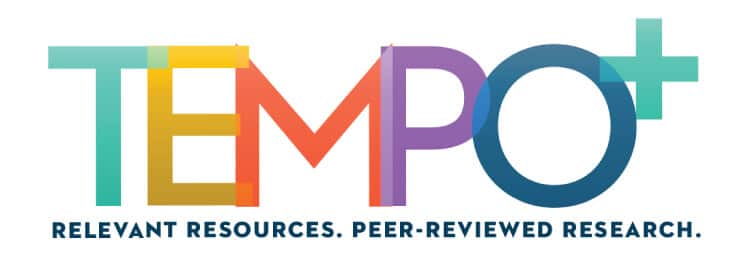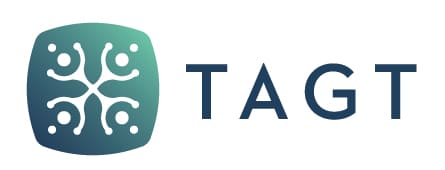In reviewing this article from the 1999 Millennial Issue of Tempo, I asked these questions, “What is still relevant today from the past? What is new? Where might the field of gifted education be headed? What might the field of gifted education be doing?” Below is a brief summary of my thoughts and current research related to these topics addressed in the earlier research review: cycles of interest in gifted education, diversity among gifted and talented students, definition of gifted and talented students, identification, program services, curriculum, and professional development.
Cycles of Interest
With no federal mandate, the field of gifted education must still contend with cycles of interest, fluctuations in funding, and inconsistencies across and within states in terms of services to gifted students. While Texas does have a mandate to serve students beginning in kindergarten through grade 12 and a State Plan for the Education of Gifted/Talented Students (TEA, 2009) that provides requirements, inconsistencies are apparent between school districts and even across campuses within the same district. House Bill 5 (HB 5), which was passed in 2013, does include gifted and talented education in school districts’ performance rating systems within the Community and Student Engagement section. The bill requires local committees to develop criteria to evaluate educational programs for gifted and talented students. However, with site-based decision making, criteria vary and therefore the quality and comprehensiveness of the programs also vary. On the more positive side, HB5 does require schools to report the number of identified gifted students and the availability of Advanced Placement, International Baccalaureate, and dual or concurrent enrollment classes. Funding still remains an issue, with a recent report from the Texas Commission on Public School Finance recommending a reallocation of gifted and talented allotment funds, eliminating the G/T allotment for distribution through the Basic Allotment. TAGT and other advocates need to remain vigilant to protect current programs, as well as create new avenues for services.
Diversity Among G/T Students
Similar to the past, educators acknowledge the diversity of the gifted population in terms of areas of strengths and needs, as well as racial, ethnic, cultural, and economic backgrounds. More recently, twice-exceptional students—those who have a gift and a disability—have been increasingly included in this group. Unfortunately, certain groups continue to be underrepresented in gifted and talented programs (TEA, 2018). While Hispanic students comprise 52.4% of the school-age population, only 41.6% are in G/T programs. Similarly, only 6.4% of African American students are in G/T programs, although they comprise 12.5% of the Texas population. Even relatively smaller percentages of economically disadvantaged students are involved in gifted programs—37.4% are in gifted programs, whereas 58.7% of the school-age population is from low-income families. White and Asian groups continue to be overrepresented (38.1% in G/T vs. 27.9% of the population and 10.6% in G/T vs. 4.4% of the population, respectively). Only 0.1% of students in G/T programs have disabilities, whereas estimates suggest 9.1% of students with disabilities may be identified as gifted (Barnard-Brak, Johnsen, Hannig, & Wei, 2015). These limited services have created large gaps in academic achievement, particularly between top-performing minority, disadvantaged students and their White, more affluent peers (Plucker, Burroughs, & Song, 2010). Over the past generation, this widening gap has created a persistent “talent underclass” (Plucker, Hardesty, & Burroughs, 2013). A recent report indicates that Texas does have equal representation of low-income students among AP exam takers (perhaps due to HB5), but large discrepancies in math and reading achievement (Plucker, Glynn, Healey, & Dettmer, 2018). Plucker et al. (2018) recommended these areas for closing the excellence gap: creating state policies, programs, and funding allocations that support high-ability students and help ensure that low-income students have equal access to advanced learning opportunities; identifying the extent to which a state’s students participate in advanced learning opportunities and how this participation compares to other students in advanced learning opportunities; and examining the extent to which students in a state reach advanced levels of academic excellence relative to other students.
Definition
The definition for gifted and talented students has remained the same in Texas and is based on the 1993 federal definition (U.S. Department of Education, 1993). It focuses on high performance capability in five areas: intellectual, creative, artistic, leadership, and specific academic fields, which are still relevant today. It also emphasizes that the comparison group, which differentiates those students needing services, should be of the same age, experience, and environment. More recently, discussion about a common national definition has examined the development of ability or talent as a lifelong process (NAGC, 2010) that encompasses the “whole child” (NAGC, 2018). Most researchers would agree that a definition of giftedness should address capability; performance level in one or more domains; a comparison group of peers who are similar in age, experience, and environment; diversity; interventions specific to the student; possible adverse effects without services; social and emotional as well as academic development; and services that vary as each and every G/T student’s strengths and needs varies.
Identification
Identification aligned to standards is still a current issue today. Similar to past research, it is important to identify students early and provide continuous and comprehensive services in their areas of talent. Texas has been a leader in this area by requiring multiple assessments from at least three sources since 1989. However, given the chronic underrepresentation of students from diverse backgrounds in G/T programs, more emphasis is now being placed on identifying children from poverty, those who are culturally different, and those with disabilities. Newer recommended strategies include (a) using more inclusive definitions and cut-off scores; (b) using universal screening along with other assessments; (b) incorporating differentiation within a Response to Intervention Framework at all tiers of service; (c) aligning assessments and criteria to the characteristics of the students and the specific domain of talent; (d) using multiple criteria at each phase in the process; (e) using alternative assessments for diverse groups; and (f) providing professional learning for all involved in the identification process to minimize bias (Johnsen, 2018).
Program Services
Similar to the past, grouping and acceleration remain issues among educators. While some educators suggest that grouping is similar to tracking, more than 100 years of research show that students benefit academically from within-class grouping, cross-grade subject grouping, and special grouping for gifted students (Steenbergen-Hu, Makel, & Olszewski-Kubilius, 2016). Acceleration also has substantial research support and continues to be an effective service delivery option for students with accelerated students significantly outperforming their nonaccelerated same-age peers. The key to positive effects appears to be matching the curriculum to individual student’s strengths and needs. Given this foundation of research, the Belin-Blank’s Acceleration Institute provides resources for making acceleration decisions and implementing academic acceleration policies. To access these resources, educators may want to visit https://www2.education.uiowa.edu/belinblank/research
Curriculum
The movement toward more domain-specific curriculum models has increased and remains in the field of gifted education. Research supports general and domain-specific abilities, task commitment, and learning opportunities as contributing to outstanding performance (Subotnik, Olszewski-Kubilius, & Worrell, 2011). Fueled by the standards movement in specific content areas, professionals in gifted education have examined ways that general education and specialized curricula can be differentiated for gifted students (see Adams, Cotabish, & Ricci, 2014; Adams, Cotabish, & Dailey, 2015; Hughes-Lynch, Kettler, Shaunessy-Dedrick, & VanTassel-Baska, 2014; Johnsen & Sheffield, 2013; Johnsen, Ryser, & Assouline, 2014; VanTassel-Baska, 2013). Along with the Texas State Plan, NAGC has also developed program standards that address curriculum differentiation (Johnsen, 2012). Specific recommended practices include (a) developing comprehensive, cohesive programming based on standards; (b) incorporating differentiated curricula in all domains; (c) using balanced assessment systems; (d) pacing instruction according to each student’s rate of learning; (e) using specific strategies such as critical and creative thinking, metacognitive, problem solving, and inquiry models; (e) developing and using culturally responsive curriculum that integrates career exploration; and (f) using high-quality resources. Similar to fears expressed in the earlier article, a constant challenge for educators of gifted students has been the rigid alignment of curriculum to standards-driven assessments based on state tests such as STAAR. In some cases, the inflexible pacing guides and benchmark tests reduce the breadth of the curriculum taught and limits what general education teachers decide to teach in their classrooms. Gifted educators will need to work with general education teachers and curriculum specialists in differentiating the curriculum in the following ways: incorporating acceleration and pacing, integrating creativity and innovation, adding depth and complexity, making interdisciplinary connections, using themes or concepts, embedding higher order thinking and problem solving, addressing global issues, and focusing on student interest.
Professional Development
Preparation of teachers in gifted education remains minimal. For the most part, preservice teachers do not take any coursework specific to gifted education and bring to the classroom common misconceptions such as “gifted students will make it on their own” and “gifted programs are elitist.” Similar to the past, Texas requires only 30 clock hours for teachers who teach students identified as gifted and talented. Since school districts are allowed to determine specific professional learning experiences within broad areas such as “curriculum and instruction for gifted/talented students” (see TEA, 2009), educators have varying degrees of knowledge and skills when implementing programs and services. Although there are national program standards, there is no nationally recognized professional development such as workshops provided by the Leadership Training Institute in previous years. Therefore, evidence-based professional development is needed for every general, special, and gifted education teacher to dispel myths and increase the likelihood of quality programs and services for gifted and talented students. Moreover, parents also need education about gifted education so they might advocate for their children at the local, state, and national levels.
In summary, the article from 1999 reviews the history of gifted education and the “frustrating cycles” of interest in gifted education. These cycles continue. Differentiated curriculum still includes acceleration and enrichment with a focus on developing student’s gifts and talents within specific domains. Challenges continue in the areas of funding; defining giftedness relative to peers who are similar in age, experience, and environment; identifying and serving gifted and talented students from diverse backgrounds; implementing research-based practices; and providing quality professional development to all educators and families of gifted students.
References
Adams, C., Cotabish, A., & Dailey, D. L. (2015). A teacher’s guide to using the Next Generation Science Standards with gifted and advanced learners. Waco, TX: Prufrock Press.
Adams, C., Cotabish, A., & Ricci, M. C. (2014). Using the Next Generation Science Standards with gifted and advanced learners. Waco, TX: Prufrock Press.
Barnard-Brak, L., Johnsen, S. K., Hannig, A. P., & Wei, T. (2015). The incidence of potentially gifted students within a special education population. Roeper Review, 37, 74–83. doi:10.1080/02783193.2015.1008661
Hughes-Lynch, C. E., Kettler, T., Shaunessy-Dedrick, E., & VanTassel-Baska, J. L. (2014). A teacher’s guide to using the Common Core State Standards with gifted and advanced learners in the English/language arts. Waco, TX: Prufrock Press.
Johnsen, S. K. (2012). NAGC Pre-K–Grade 12 gifted education programming standards: A guide to planning and implementing high-quality services. Waco, TX: Prufrock Press.
Johnsen, S. K. (Ed.). (2018). Identifying gifted students: A practical guide (3rd ed.). Waco, TX: Prufrock Press.
Johnsen, S. K., Ryser, G. R., & Assouline, S. (2014). A teacher’s guide to using the Common Core State Standards with gifted and advanced learners in mathematics. Waco, TX: Prufrock Press.
Johnsen, S. K., & Sheffield, L. J. (Eds.). (2013). Using the Common Core State Standards for mathematics with gifted and advanced learners. Waco, TX: Prufrock Press.
National Association for Gifted Children. (2010, March). Redefining giftedness for a new century: Shifting the paradigm. Retrieved from https://www.nagc.org/sites/default/files/Position%20Statement/Redefining%20Giftedness%20for%20a%20New%20Century.pdf
National Association for Gifted Children. (2018, March). The whole gifted child task force: Report to the NAGC Board of Directors. Retrieved from https://www.nagc.org/sites/default/files/key%20reports/4.1%20WGC%20Task%20Force%20Report.pdf
Plucker, J. A., Burroughs, N. A., & Song, R. (2010). Mind the (other) gap: The growing excellence gap in K-12 education. Bloomington, IN: Center for Evaluation and Education Policy. Retrieved from https://files.eric.ed.gov/fulltext/ED531840.pdf
Plucker, J., Glynn, J., Healey, G., & Dettmer, A. (2018). Equal talents, unequal opportunities (2nd ed.). Washington, DC: Jack Kent Cooke Foundation. Retrieved from https://www.jkcf.org/wp-content/uploads/2018/03/FINAL_2018_JKCF_-Equal_Talents_Unequal_Opportunities-_Exec_Summary.pdf
Plucker, J. A., Hardesty, J., & Burroughs, N. (2013). Talent on the sidelines: Excellence gaps and America’s persistent talent underclass. Storrs: University of Connecticut, Center for Education Policy Analysis at the Neag School of Education. Retrieved from http://webdev.education.uconn.edu/static/sites/cepa/AG/excellence2013/Excellence-Gap-10-18-13_JP_LK.pdf
Steenbergen-Hu, S., Makel, M. C., & Olszewski-Kubilius, P. (2016). What one hundred years of research says about the effects of ability grouping and acceleration on K–12 students’ academic achievement: Findings of two second-order meta-analyses. Review of Educational Research, 86, 849–899. doi:10.3102/0034654316675417.
Subotnik, R. F., Olszewski-Kubilius, P., & Worrell, F. C. (2011). Rethinking giftedness and gifted education: A proposed direction forward based on psychological science. Psychological Science in the Public Interest, 12(1), 3–54. doi:10.1177/1529100611418056
Texas Education Agency. (2009). Texas state plan for the education of gifted/talented students. Austin, TX: Author. Retrieved from https://tea.texas.gov/Academics/Special_Student_Populations/Gifted_and_Talented_Education/Gifted_Talented_Education/
Texas Education Agency. (2018). Enrollment in Texas public schools 2017–2018. (Document No. GE18 601 06). Austin, TX: Author.
U.S. Department of Education, Office of Educational Research and Improvement (1993). National excellence: A case for developing America’s talent. Washington DC: Author. Retrieved from http://nagc.org.442elmp01.blackmesh.com/sites/default/files/key%20reports/National%20Excellence%20%281993%29.pdf
VanTassel-Baska, J. (2013). Using the Common Core State Standards for English language arts with gifted and advanced learners. Waco, TX: Prufrock Press.
Susan K. Johnsen, Ph.D., is a professor emerita of the Department of Educational Psychology at Baylor University. She is editor-in-chief of Gifted Child Today and coauthor of Identifying Gifted Students: A Practical Guide, Using the NAGC Pre-K-Grade 12 Gifted Programming Standards, Independent Study Program, and more than 300 articles, monographs, technical reports, chapters, and other books related to gifted education. She has written three tests used in identifying gifted students: Test of Mathematical Abilities for Gifted Students (TOMAGS-2), Test of Nonverbal Intelligence (TONI-4), and Screening Assessment Gifted Students (SAGES-3). She is past president of The Association for the Gifted (TAG), Council for Exceptional Children, and past president of the Texas Association for Gifted and Talented (TAGT). She has received awards for her work in the field of education, including NAGC’s Ann Isaac’s Award, NAGC’s President’s Award, CEC’s Leadership Award, TAG’s Leadership Award, TAGT’s President’s Award, TAGT’s Advocacy Award, and Baylor University’s Investigator Award, Teaching Award, and Contributions to the Academic Community Award. She may be reached at Susan_Johnsen@baylor.edu.







